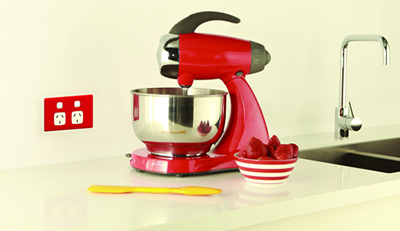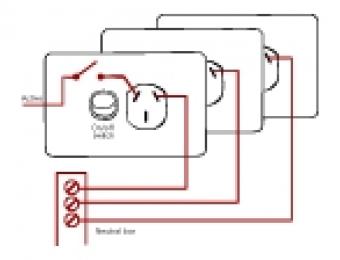
How low can you go?
There’s much more to exactly where you can mount power points (also called GPOs, short for 'general power outlet' or 'general purpose outlet'), although most are near floor level for the sake of safety and convenience.
The way power points need to be mounted is set out very specifically in the Australian Standards (AS/NZS 3000:2007), and your electrical planner and electrical contractor should be completely familiar with all of rules and conventions regarding how things need to be positioned.
When power points are installed, there are some important things that need to be adhered to:
- Access - GPOs cannot be installed where withdrawing a plug from them is likely to be impeded by fixed equipment or fixtures. They shall in general not be mounted less than 75 millimetres from the floor.
- Wet areas - Bathrooms are divided into 'zones', based on the positions of different water outlets (e.g. shower heads, basin taps, bath taps). GPOs can only be installed outside the specified zones. Water is a surprisingly good conductor (and we're mostly made up of water) so it's very important that this is carefully adhered to. There are very specific rules about where GPOs can and can't be installed in bathrooms.
- Switches - All GPOs are required to have a switch operating in the active wire.
Polarisation
Facing the mounted GPO, active wires are on the top left – (note: active wires can have any colour except green, yellow, a combination of green and yellow, black or light blue). The neutral wire is on the top right and can have the colour black or light blue. The earth is bottom vertical and has to have a green-yellow combination.
A very important test is the polarisation test - your electrician has to do this on a new installation or any wiring extensions. If the active and neutral are reversed, it means that even when power has been switched off (the plugged in appliance is not operating), you are still in danger of an electric shock if, for example, there is a fault in the insulation to earth.
All electrical work MUST be carried out by a licensed electrician, and must be accompanied by a safety certificate. Unless you're a qualified electrical contractor, doing electrical work yourself is very dangerous and will void your insurance.




